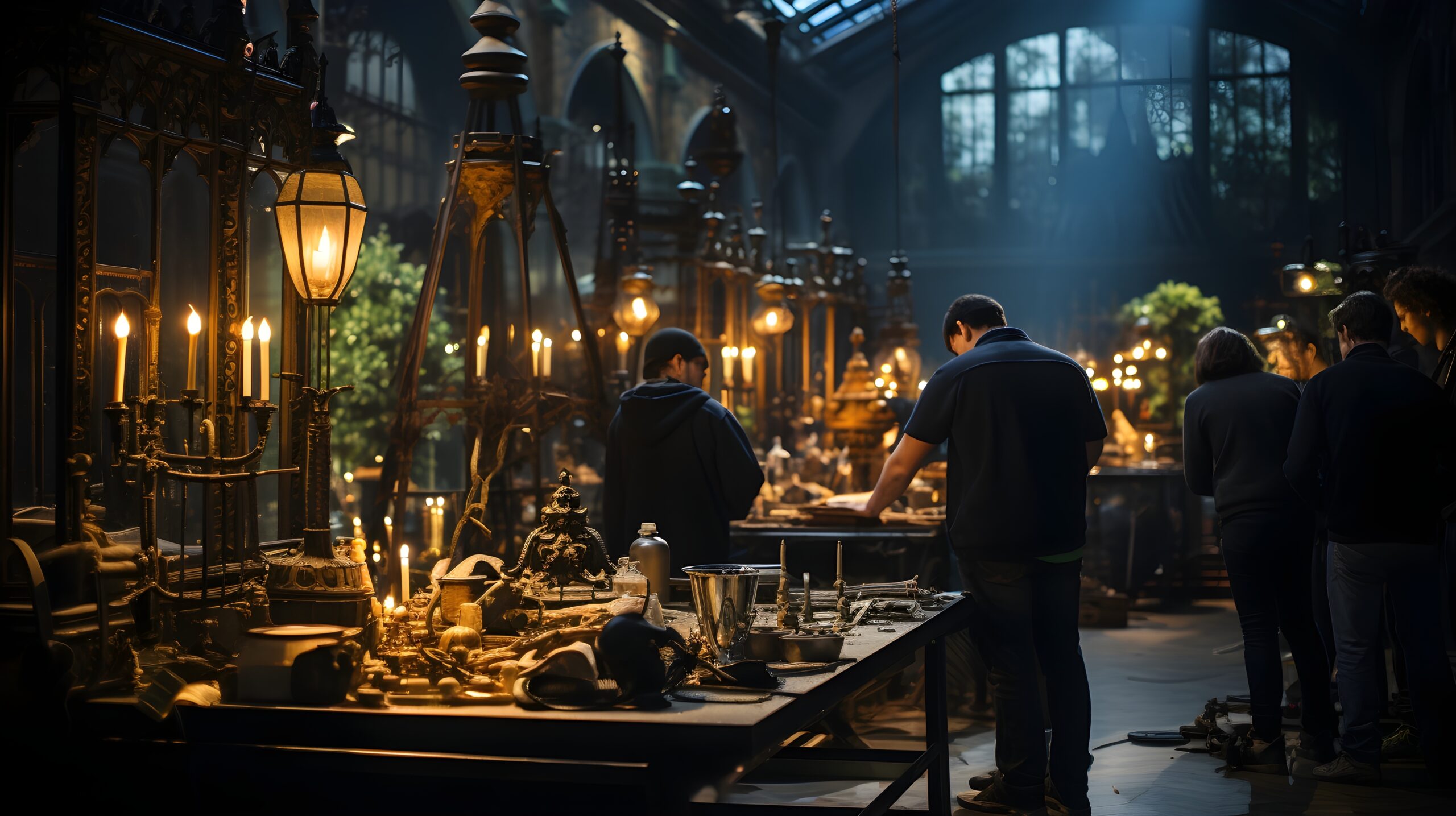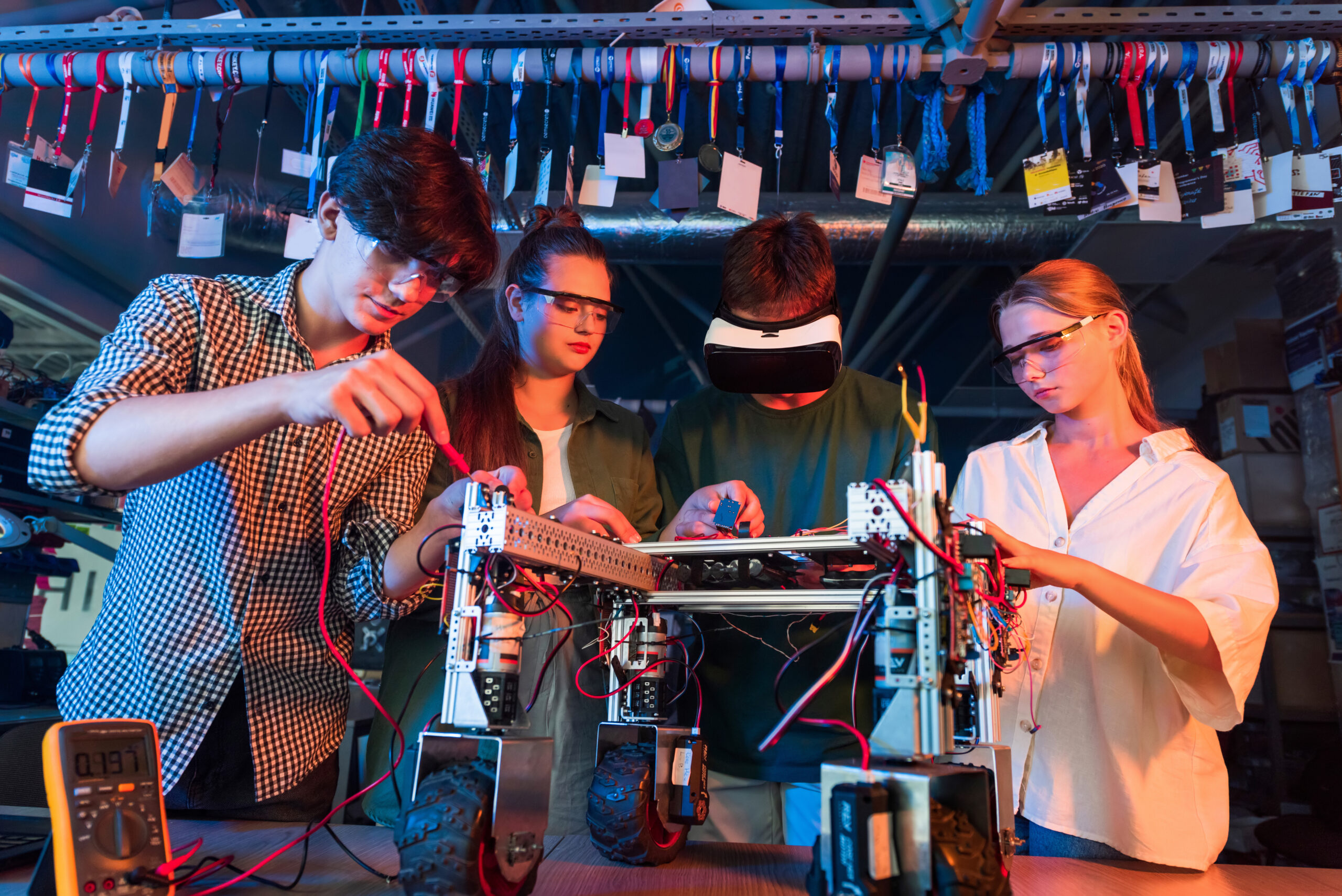Medieval Dynasty production technology revolutionized life in the Middle Ages. Advanced farming methods, efficient resource management, and innovative tools helped societies thrive. Inventions like watermills, windmills, and crop rotation boosted agricultural productivity. These technologies supported the growth of villages and strengthened local economies. Medieval Dynasty production technology fed growing populations and fueled trade and urban development.
Medieval Dynasty Production Technology Revolutionized the Medieval Era
Advanced Farming Techniques in Medieval Dynasty Production Technology
Medieval dynasty production technology introduced innovative farming techniques that changed agriculture forever. Crop rotation became a groundbreaking practice, preventing soil depletion and increasing harvests. New irrigation methods helped farmers maintain fertile land, even in challenging climates. These advancements ensured stable food supplies, supporting growing populations and thriving villages.
The Role of Watermills and Windmills in Medieval Dynasty Production Technology
Watermills and windmills were key innovations in medieval dynasty production technology. They automated labor intensive tasks such as grinding grain and pumping water. These machines boosted productivity and saved time, allowing communities to focus on other essential tasks. Their widespread use transformed agriculture and made resource management more efficient.
Impact of Medieval Dynasty Production Technology on Construction and Infrastructure
Medieval dynasty production technology also advanced construction and infrastructure. Improved tools enabled the creation of more substantial buildings and more reliable bridges. These developments strengthened villages and supported growing trade routes. Better infrastructure meant easier transportation of goods, connecting communities like never before.
How Medieval Dynasty Production Technology Boosted Trade and Urbanization
The innovations in medieval dynasty production technology fueled economic growth by improving trade. With surplus food and more potent tools, villages could exchange goods and services across vast distances. As trade networks expanded, urban centers grew into bustling hubs of commerce and culture: this technological progress shaped medieval economies and strengthened societies.
Legacy of Medieval Dynasty Production Technology in Modern Practices
Medieval dynasty production technology laid the foundation for many modern practices. Crop rotation remains a vital agricultural technique, while windmills inspired today’s renewable energy solutions. The efficient tools and methods developed during the medieval era influenced engineering, farming, and resource management worldwide.
Advanced Farming Techniques in Medieval Dynasty Production Technology
Medieval Dynasty production technology introduced groundbreaking farming methods that enhanced agricultural efficiency. These innovations in ploughing, crop rotation, and using fertilizers contributed to increased soil fertility and better harvests. The application of these techniques played a pivotal role in improving food production and sustaining communities during the medieval period. Let’s explore some key advancements that revolutionized farming during this era.
Innovations in Plowing Methods for Better Soil Preparation
In the medieval period, advancements in ploughing techniques were crucial for efficient farming. The introduction of heavy ploughs, such as the moldboard plough, allowed farmers to turn over the soil more effectively, breaking up compacted earth and preparing it for planting.
This led to improved aeration and better root growth, which is essential for healthy crops. Iron ploughshares further enhanced durability and efficiency, allowing for deeper and more precise ploughing, ultimately increasing yields.
How Crop Rotation Improved Soil Fertility and Harvests
Crop rotation was another key advancement in medieval dynasty production technology. Farmers began rotating different types of crops each season, ensuring that the soil did not become depleted of essential nutrients. The soil’s nitrogen levels remained balanced by alternating between crops like wheat, beans, and barley, preventing exhaustion and promoting healthier harvests. This practice also helped control pests and diseases, reducing the risk of crop failure and boosting overall productivity.
Use of Organic and Mineral Fertilizers to Boost Yields
The use of fertilizers in medieval farming was not as advanced as modern day technology, but it still profoundly impacted crop yields. Organic fertilizers, such as manure and compost, were commonly used to enrich the soil with essential nutrients. In addition, early forms of mineral fertilizers, like lime, were applied to correct soil acidity and enhance plant growth.
These natural methods played a significant role in increasing agricultural output, contributing to the success of medieval farming systems.
Medieval Dynasty production technology laid the foundation for agricultural practices that would evolve over centuries. The techniques developed during this time improved soil quality and crop yields and ensured food security for growing populations. Through innovations in ploughing, crop rotation, and fertilization, medieval farmers were able to maximize the potential of their land, setting the stage for future advancements in agriculture.
Harnessing Water and Wind Power in Medieval Dynasty Production Technology
In the Medieval Dynasty, production technology, watermills, and windmills played pivotal roles in transforming agricultural and industrial processes. These innovations significantly enhanced productivity, revolutionizing grain processing, machinery operations, and agriculture in less accessible regions. Medieval societies achieved greater efficiency by utilizing natural resources like water and wind, laying the foundation for economic growth and expansion in the Middle Ages.
The Role of Watermills in Processing Grains and Powering Machinery
Watermills were a cornerstone of medieval agriculture and production technology. In the Medieval Dynasty production technology, these mills harnessed the power of flowing water to grind grains, which was once labor intensive and time consuming. Using water wheels allowed for continuous operation, making grain milling faster and more efficient.
Watermills could also power machinery, such as sawmills and hammers, making them versatile tools in both agricultural and industrial settings. This technology greatly improved the overall food supply and provided energy for various mechanical tasks, playing an essential role in the economy.
How Windmills Enhanced Production in Less Accessible Regions
Windmills offered an alternative to watermills, especially in regions where water sources were scarce. In the Medieval Dynasty production technology, windmills helped increase agricultural productivity by using wind to turn large blades, which powered grain mills and other machinery.
In remote or less accessible areas where rivers or streams might not be available, windmills became essential for processing grain, pumping water, and even powering some industrial machinery. This innovation allowed medieval societies to harness wind energy, improving food production and resource management in areas previously limited by geography.
Increased Agricultural Productivity Through These Technologies
Both watermills and windmills contributed to the rise in agricultural productivity in the Medieval Dynasty production technology. By automating the labor intensive tasks of grinding grains and other essential farming processes, these technologies allowed for greater crop yields.
Farmers could spend less time on manual labour, redirecting their efforts toward expanding cultivation and improving crop management. Additionally, with these power driven systems, food processing became more reliable and consistent, supporting population growth and contributing to the stability of medieval societies. These advancements were crucial for enhancing the overall economy and ensuring the sustainable growth of agricultural systems.
Resource Management in Medieval Dynasty Production Technology
Efficient Land and Water Management Techniques
Efficient land and water management were essential components of medieval dynasty production technology. In medieval times, making the most of available resources was crucial, especially in farming and agriculture. Methods such as crop rotation and terracing helped maintain soil fertility, allowing for consistent production.
Farmers also developed techniques for irrigation to ensure water was available to crops, especially during dry spells. These water management systems, from simple wells to more advanced aqueducts, were key in boosting crop yields and preventing wastage.
Innovations in Crop Storage to Prevent Wastage
Medieval dynasty production technology also made strides in crop storage. Preservation techniques such as drying, salting, and fermentation were common ways to extend the shelf life of harvested crops. Granaries and cool storage rooms were constructed to protect grain from pests and moisture, which could cause spoilage.
These innovations ensured crops were kept safe for consumption through harsh seasons, reducing waste and ensuring food security for entire communities. The practical storage systems contributed to more stable economies in medieval times.
Methods for Managing Livestock for Sustained Productivity
Livestock management was another vital aspect of medieval dynasty production technology. Farmers developed efficient methods to raise and care for animals, which were crucial for food and labour. Selective breeding helped improve livestock productivity, with stronger and healthier animals being bred over generations.
Farmers also used pasture rotation to ensure their animals had access to fresh grazing land, preventing overgrazing and maintaining soil health. These methods ensured a steady supply of meat, milk, and wool and supported other agricultural activities, such as ploughing fields.
Tool Making Innovations in Medieval Dynasty Production Technology
The development of medieval dynasty production technology brought revolutionary changes to farming methods, with key innovations like iron ploughs and advanced hand tools. These innovations played a vital role in improving farming efficiency and improving medieval agricultural societies’ productivity. These tools significantly transformed daily life by simplifying the farming process, enabling farmers to manage larger fields and cultivate more crops.
Development of Iron Plows for Easier and Deeper Tilling
Iron ploughs became a game changer in medieval dynasty production technology. Prior to their creation, farmers used wooden ploughs that were ineffective for deeper soil tilling. The introduction of iron ploughs allowed for easier penetration into tough, rocky soils.
This advancement made it possible to till the land more efficiently and prepared it better for planting, increasing crop yields. The iron plough also lasted longer and required less maintenance, making it a reliable tool for generations.
Creation of Advanced Hand Tools to Simplify Farming Tasks
Alongside the iron plough, the creation of advanced hand tools such as hoes, sickles, and spades revolutionized farming in the medieval dynasty production technology. These hand tools were designed to ease various tasks, including planting, weeding, and harvesting. Farmers could work faster and with greater precision with more specialized tools. The simplicity of these tools made them accessible to many, enabling widespread use across medieval society.
Impact of These Innovations on Farming Efficiency
The impact of these innovations on farming efficiency cannot be overstated as part of medieval dynasty production technology; iron ploughs and advanced hand tools enabled farmers to till deeper, manage larger plots of land, and produce more food.
This increase in farming productivity supported the growth of villages and towns, feeding larger populations and fostering economic stability. The introduction of these tools marked a significant leap in agricultural development, laying the foundation for future advancements in farming technology.
Building Techniques in Medieval Dynasty Production Technology
Medieval Dynasty production technology played a crucial role in shaping the efficiency and sustainability of medieval settlements. The construction of sturdy barns and efficient storage houses was vital for safeguarding resources. Using locally sourced materials made cost effective building techniques possible, supporting the community’s long term survival.
Durable structures were not just for storage; they were key to ensuring the security and stability of a village, especially when faced with harsh weather or external threats. This section will explore how medieval builders achieved these feats and their lasting impact on the dynasty.
Construction of Sturdy Barns and Efficient Storage Houses
In the Medieval Dynasty, production technology, such as the construction of barns and storage houses, was essential for storing food, tools, and valuable resources. Barns were designed to withstand weather conditions and provide a safe place for crops and livestock.
The architecture focused on maximizing space, ensuring everything from grains to tools was stored correctly. With carefully planned layouts, these structures could hold large amounts of produce, keeping them dry and protected from pests. Sturdy barns and storage houses significantly invested in the village’s productivity, ensuring supplies were available year round.
Use of Locally Sourced Materials for Cost Effective Building
One of the key features of Medieval Dynasty production technology was the use of locally sourced materials. Builders prioritized materials readily available in the surrounding environment, such as wood, stone, and clay. This made construction more affordable and sustainable, reducing the need for costly transportation of foreign resources.
Local materials also allowed builders to create structures well suited to the climate and terrain, ensuring they were durable and efficient. Using natural resources helped keep production costs low, which was essential for maintaining a thriving medieval community.
Importance of Durable Structures in Safeguarding Resources
Durability in construction was paramount in Medieval Dynasty production technology. The longevity of buildings like barns and storage houses ensured that valuable resources were kept safe over time. A well built structure could withstand harsh weather conditions such as storms, heavy snow, or extreme heat, safeguarding food and supplies from spoilage or damage.
This durability was particularly crucial in medieval times when resource scarcity was a constant concern. Sturdy buildings also gave villagers a sense of security, knowing that their hard earned resources were protected, boosting morale and productivity.
Trade and Commerce Enabled by Medieval Dynasty Production Technology
Medieval dynasty production technology played a pivotal role in shaping the economies of the Middle Ages. The development of new production techniques fueled the growth of markets and enhanced trade networks, contributing to urbanization.
These advancements made it easier to exchange goods across regions, driving the rise of cities and commercial hubs. The influence of production innovations extended beyond local economies, reaching far flung territories and connecting diverse cultures through trade.
Role of Markets in Driving Medieval Economies
Medieval dynasty production technology revolutionized how goods were produced and traded, leading to the rise of bustling markets. These markets became the heart of medieval economies, where surplus products from rural areas were brought to urban centers.
With improvements in farming, textiles, and metalworking, the availability of goods increased, creating a thriving marketplace for local and foreign traders. The creation of specialized goods, such as fine pottery and textiles, allowed artisans to meet the demand for luxury items. At the same time, farmers could exchange agricultural products, ensuring the smooth operation of the economy.
Exchange of Goods and Resources Across Growing Trade Networks
One of the most significant impacts of medieval dynasty production technology was the expansion of trade networks. Advancements in production, such as the development of better ploughs, more durable fabrics, and metalworking tools, enabled the production of high quality goods that were highly sought after.
As a result, markets expanded beyond local villages to distant towns and cities, facilitating the exchange of resources. Merchants could now transport goods over long distances with greater ease, connecting regions and cultures that were previously isolated. The growth of these trade routes also led to the introduction of new goods, such as spices, silk, and precious metals, further fueling economic development.
Influence of Production Advancements on Urbanization
The introduction of medieval dynasty production technology greatly influenced urbanization during the Middle Ages. With better tools and techniques, agriculture became more productive, leading to an increase in food supply. This surplus allowed rural populations to migrate to cities for work and better opportunities, contributing to the growth of urban centers.
As markets grew, so did the demand for skilled workers in various crafts and industries. This resulted in the development of vibrant urban communities with specialized trades, further boosting the importance of cities as economic powerhouses.
Social and Economic Impact of Medieval Dynasty Production Technology
How it Transformed Daily Village Life
Medieval dynasty production technology played a significant role in reshaping everyday life in rural villages. By improving agricultural techniques, the technology made farming more efficient and productive. Villagers could now produce larger crops, leading to a surplus in food that could be shared with surrounding communities.
This technology also introduced tools that reduced labour, allowing villagers more time for other activities. Ultimately, medieval dynasty production technology empowered rural populations, making life easier and more sustainable.
Contribution to the Growth of Local Economies and Communities
The impact of medieval dynasty production technology went beyond the village’s boundaries. By boosting local agricultural output, it supported the growth of regional economies. Surpluses in food production and goods allowed villages to trade with neighboring towns and cities.
As trade expanded, so did the need for skilled labour, creating new opportunities for people within these communities. This strengthened local economies and fostered closer ties between regions, enabling cultural and economic growth felt across medieval societies.
Improvement in Living Standards Through Better Resource Availability
Medieval dynasty production technology had a direct effect on living standards. Introducing advanced farming techniques meant that food, one of the necessities, became more accessible and plentiful. With better resource availability, villagers could afford to improve their homes, clothing, and overall lifestyle.
Technological innovations in producing tools, textiles, and crafts also made life more comfortable and less labor intensive. Over time, these advancements contributed to a higher quality of life, making it possible for many to live longer, healthier, and more fulfilling lives.
Legacy of Medieval Dynasty Production Technology
The medieval dynasty production technology has left a significant mark on modern agriculture and various industrial fields. Innovations from the medieval period continue to influence farming practices and technology today. Many of the techniques developed during this time were vital for shaping the growth of agriculture and have inspired modern technological advancements.
The key lessons from medieval production methods, such as sustainable farming, craftsmanship, and resource management, remain relevant today.
Influence of Medieval Practices on Modern Agriculture
The medieval dynasty production technology shaped how modern agriculture evolved, particularly in crop rotation, irrigation, and animal husbandry. Techniques like the three field system helped farmers sustain soil fertility, which is still applied in organic farming today.
The introduction of heavy ploughs and the use of oxen revolutionized farming efficiency, laying the groundwork for more advanced agricultural machinery. Many of these foundational practices remain critical to modern sustainable farming methods, showcasing the enduring legacy of medieval innovation.
Technological Advancements Inspired by Medieval Innovations
Medieval practices have inspired several technological advancements. The medieval dynasty production technology introduced windmills and watermills, which paved the way for harnessing natural energy sources for industrial purposes.
These early innovations laid the foundation for developing modern renewable energy technologies. Additionally, using hand tools and early mechanized systems in medieval production influenced the creation of advanced machinery used in various industries today, from manufacturing to agriculture.
Key Lessons Learned from Medieval Production Methods
One of the most valuable lessons from medieval dynasty production technology is the importance of resourcefulness and sustainability. Medieval societies relied on available resources, such as local materials and labour, which shaped their production methods. Using crop diversification, rotation, and livestock integration in farming helped ensure long term sustainability, a practice still embraced by modern agriculturalists.
Furthermore, medieval craftsmanship emphasized the importance of skill and manual labour, offering a perspective that values quality and durability in production, a principle seen in today’s artisanal and precision industries.
FAQs:
Q1: How do we get production technology points?
You can earn production technology points by crafting items, cooking food, and processing materials in workshops, taverns, or smithies. Regular use of these facilities will gradually increase your points.
Q2: How did you farm technology during the Medieval Dynasty?
Farm technology points are earned by ploughing fields, planting seeds, harvesting crops, and using farming tools like hoes and scythes. The more agricultural tasks you complete, the faster you earn points.
Q3: How did production work during the Medieval Dynasty?
Production in the Medieval Dynasty involves creating goods in workshops and smithies. Players can assign villagers to craft items, increasing productivity while they manage other tasks. Each crafted item contributes to production technology points.
Q4: What makes the most money in Medieval Dynasties?
Flax is one of the most profitable items. You can grow flax, process it into flax stalks and linen thread, and sell if for a significant profit. Crafting and selling tools like stone knives also generate good income.
Q5: Does mood affect production in Medieval Dynasties?
Yes, villagers with a high mood are more efficient in their assigned tasks, including production, farming, and crafting. Keeping their mood up ensures better productivity.
Q6: Do resources regenerate in the Medieval Dynasty?
Yes, some resources regenerate over time. For example, trees regrow after a few seasons, and wild plants like berries and mushrooms reappear annually. Stone and clay deposits, however, do not regenerate.
Q7: Is there armour in the Medieval Dynasty?
Yes, there are different types of armour, such as padded clothing, fur clothing, and leather armour, which protect the environment and combat situations.
Q8: What was the building limit for the Medieval Dynasty?
The building limit depends on your Dynasty Reputation. Starting with a lower limit, you can increase it by completing quests, gaining a reputation, and expanding your settlement.
Q9: Do villagers hunt in the Medieval Dynasty?
Yes, villagers assigned to hunting lodges will automatically hunt animals and collect resources like meat, leather, and fur, which are stored in the resource storage.
Q10: What is the best animal to hunt in the Medieval Dynasty?
Deer and boar are considered the best animals to hunt due to their balanced difficulty and resource yield, including meat, leather, and fur.
Q11: Do villagers make babies in the Medieval Dynasty?
Yes, villagers can have children if married and live together in the same house. Children grow up over time and can eventually join the workforce.
Q12: Can you steal in the Medieval Dynasty?
You can steal items from other villages, but it lowers your Dynasty Reputation. Be cautious, as getting caught has consequences.
Q13: Do trees grow back in the Medieval Dynasty?
Trees grow back after a few seasons, but only if you leave the stumps intact. Removing stumps prevents regrowth.
Q14: How do taxes work in the Medieval Dynasty?
Taxes are based on the number of buildings and fields you own. Each spring, you pay taxes to the Castellan. Failing to pay taxes lowers your reputation and may lead to penalties.
Q15: What is flax stalk in the Medieval Dynasty?
Flax stalk is a resource obtained from harvesting flax crops. It is processed into linen thread, a valuable crafting material for clothes and ropes.
Conclusion:
Medieval Dynasty production technology plays a crucial role in the success and sustainability of your settlement. By effectively managing and upgrading production systems, players can efficiently craft essential goods, maximize resource utilization, and ensure steady economic growth.
Understanding the various aspects of production technology—from farming and crafting to resource management and villager assignments—enables players to optimize their strategies and overcome the challenges of medieval life. Investing in production technology not only enhances the overall functionality of your dynasty but also paves the way for expanding your territory and improving the quality of life for your villagers.
Mastering production technology is, therefore, indispensable for anyone aiming to thrive in the immersive world of the Medieval Dynasty.




